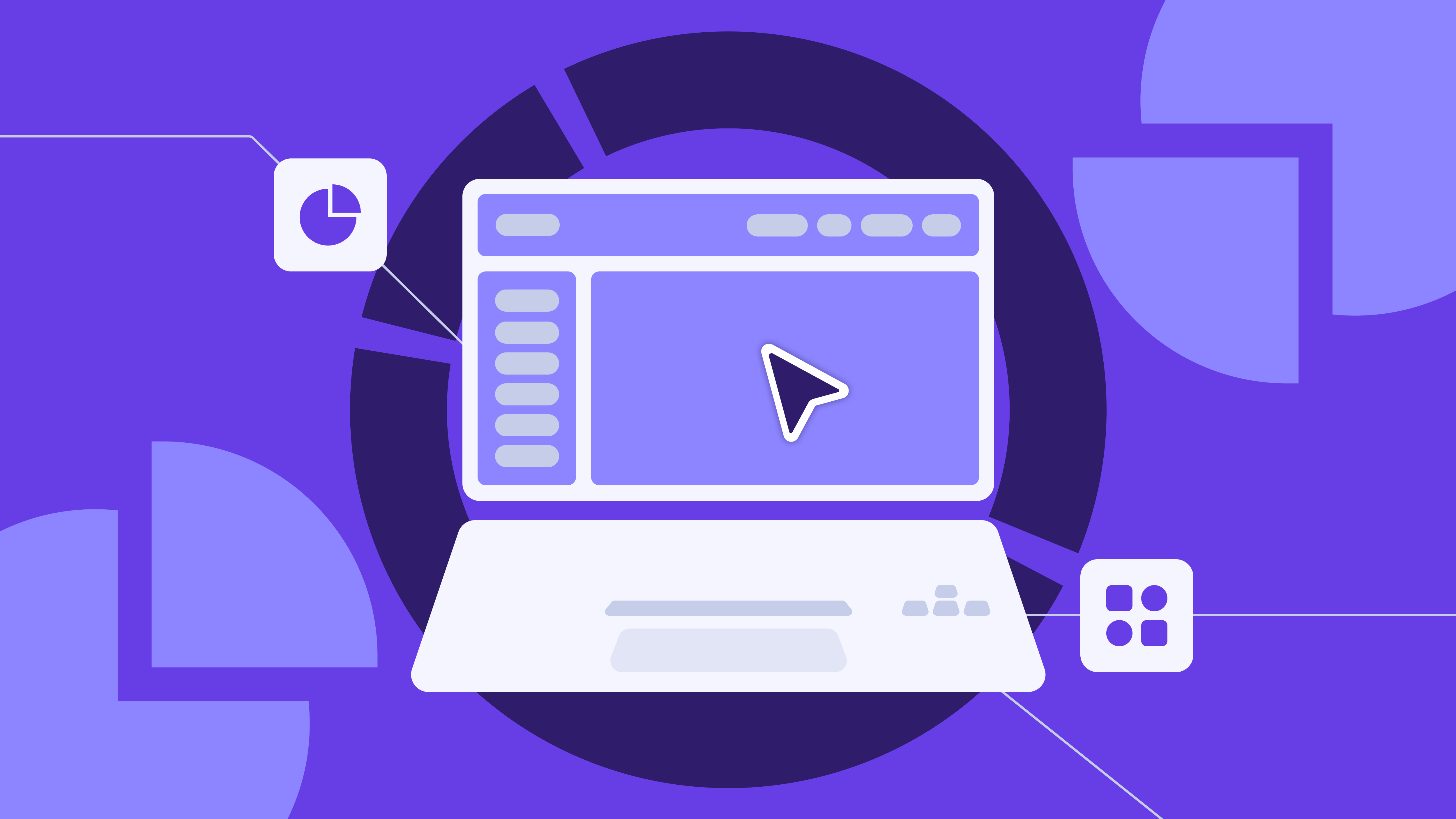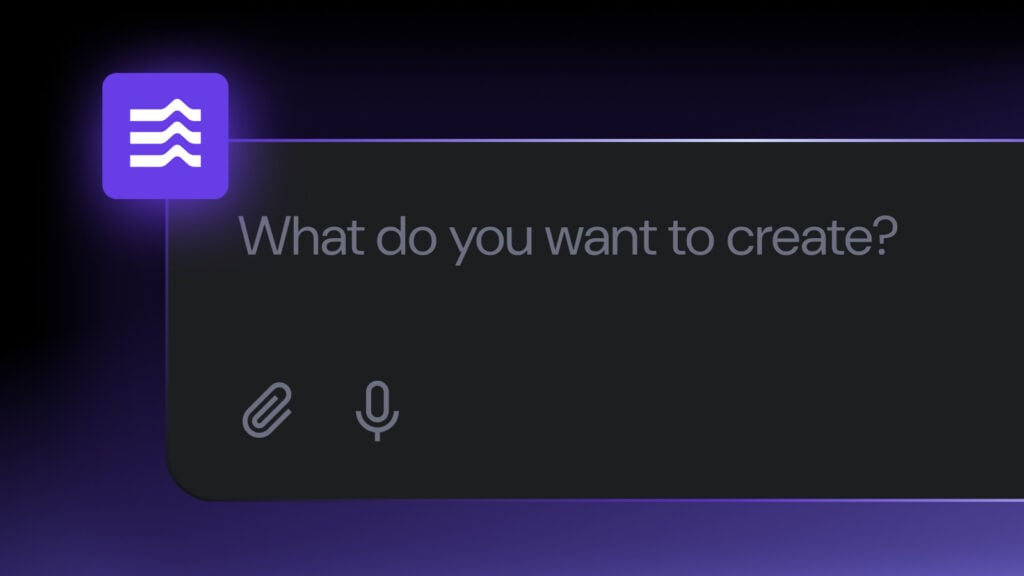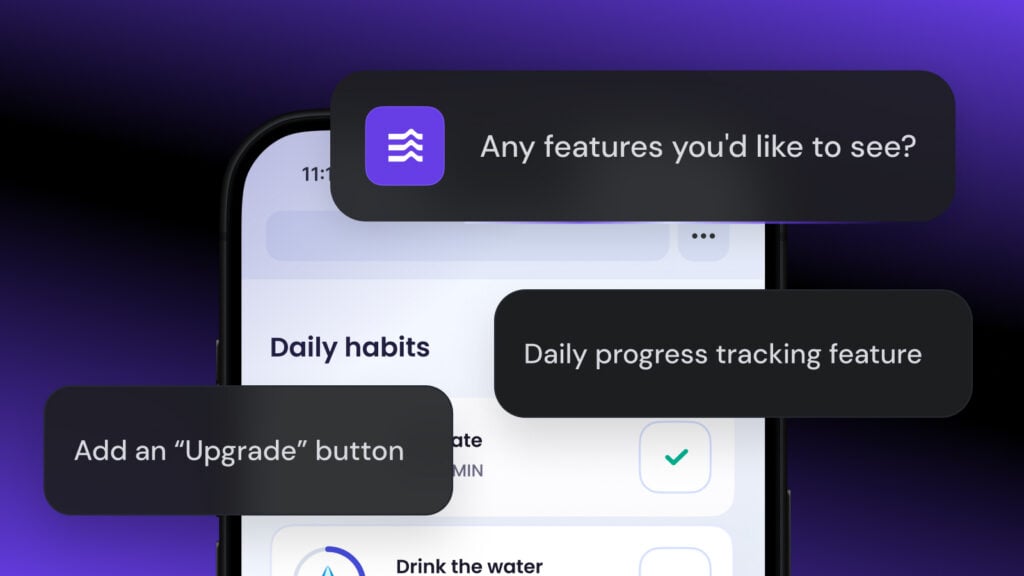How to build software from scratch: A step-by-step guide

Building software from scratch follows a clear roadmap: you start by defining what you want to build, plan your approach, write the code, test everything thoroughly, and then launch and maintain your product.
Here’s the complete breakdown of each step:
- Outline software requirements and key features.
- Create a project development plan.
- Design the user experience and interface.
- Structure your software architecture.
- Develop your software.
- Test for bugs, performance, and usability.
- Deploy your software and go live.
- Maintain, update, and improve your product.
In this article, we’ll guide you through each step in a clear, beginner-friendly way. You’ll also learn how much it costs to build a software platform and what challenges to expect when working on a software project.
1. Define software requirements and features
Software requirements define what the software should do and how it should behave under different conditions to meet user and stakeholder expectations.
In contrast, software features are specific functions or characteristics that let users interact with the system and achieve their goals.
Software requirements and features are closely related, but they serve different purposes. Here’s a comparison between them:
| Aspect | Requirements | Features |
| Purpose | Define what the software must do | Describe how users interact with it |
| Focus | Behavior, rules, and logic | Interface, tools, and actions |
| Type | Functional, non-functional, and system | Core, UI, and UX |
| Measurement | Meets performance and behavior expectations | Works as intended and is easy to use |
| Example | Allow users to reset passwords | A “Forgot password” button on the login screen |
In short, requirements outline what the software must achieve, while features explain how it will accomplish that goal.
To help you define both software requirements and features, follow these tips:
- Engage stakeholders – work with users, clients, and team members to gather input on what the software should do.
- Prioritize needs – identify which requirements and features are essential for your minimum viable product (MVP) and which can come later.
- Document clearly – Use simple, specific language so everyone on your team understands what’s needed.
2. Build a project plan
A software project plan is a comprehensive roadmap for developing your software. It outlines the project’s scope, objectives, timeline, resources, and potential risks.
A solid project plan helps keep the software project on track and within budget. It also makes sure everyone involved understands their roles and responsibilities.
Key elements of a good project plan include:
- Project objectives – clearly define what the software should achieve. Use SMART criteria: specific, measurable, achievable, relevant, and time-bound.
- Scope statement – outline what the project includes and excludes. This prevents scope creep and keeps the team focused on agreed-upon deliverables.
- Work breakdown structure (WBS) – break the project into smaller, manageable tasks. This makes it easier to assign responsibilities and track progress.
- Timeline and milestones – set a realistic schedule with clear milestones to monitor progress and stay on track.
- Resource allocation – list the team members, tools, and technologies needed. Ensure the right resources are available at the right time.
- Budget estimation – estimate development costs, including staff, tools, and other expenses. This helps manage funding and spending more effectively.
- Risk management plan – identify potential risks and outline strategies to reduce or prevent them. Planning minimizes disruption.
- Communication plan – decide how the team will share updates and information. Regular updates and clear channels improve collaboration and transparency.
3. Design the UX and UI of your application
The main difference between user experience (UX) and user interface (UI) is their focus: UX design shapes how the product feels and functions, while UI design controls how it looks and how users interact with it on the screen.
A strong UX makes the software intuitive and aligned with user needs. A well-designed UI makes the product easy to navigate and aesthetically pleasing.
Both UX and UI play a key role in software design. Together, they help create functional, user-friendly, and visually engaging software.
To connect UX and UI design, build a prototype. Software prototyping involves creating an early version of the product to test and validate your design ideas.
Prototyping lets designers and stakeholders explore concepts, spot usability issues, and collect feedback early, reducing the risk of costly changes later in development.
4. Create the software architecture
Software architecture defines the high-level structure of your application. It acts as the system’s skeleton, showing how different components are organized, how they interact, and work together.
Here are the key parts of software architecture:
- Components – modular parts of the system, each responsible for a specific function. For example, in an ecommerce application, separate components might handle user authentication, the product catalog, and payment processing.
- Interfaces – defined points of interaction between components, often implemented through APIs. For instance, in an ecommerce platform, the payment processing component interacts with a third-party payment gateway via an API, without needing to understand the gateway’s internal logic.
- Data flow – the pathways through which data moves within the system. Clear, efficient data flow ensures that information reaches the right components securely and on time.
- Deployment environment – the arrangement of software components on physical or virtual private servers (VPSs). This setup impacts performance, scalability, and fault tolerance.
Designing a solid application architecture is important because it streamlines the development process. It also makes the software easier to test, debug, and update in the future.
5. Develop your software
Developing your software involves writing the actual code based on your design specifications. This step brings your project to life by selecting the appropriate programming languages, frameworks, and tools that align with your requirements.
The following is a breakdown of what you need to select:
- Programming languages – choose languages that best suit your application’s needs. For example, Python is ideal for data analysis, while JavaScript is preferred for developing web apps.
- Frameworks and libraries – these pre-built solutions based on programming languages help streamline development. Frameworks like React are great for frontend development, while Django is commonly used for the backend.
- Development tools – these tools enhance productivity and collaboration. Integrated development environments (IDEs) like Visual Studio Code, version control systems like Git, and project management tools like Jira are the widely used ones.
In recent years, artificial intelligence (AI) has emerged as an alternative to traditional coding methods. AI-assisted coding tools can generate code snippets, suggest improvements, and even write entire functions based on natural language prompts (NLP).
This approach, often called “vibe coding,” lets you focus on larger tasks that require human oversight, such as architecture and design, instead of repetitive tasks like writing syntax.
📚 Suggested reading
Have a look at our article comparing coding with AI vs. traditional coding. It covers aspects like development speed, future scalability, security concerns, and when to choose one method over the other.
6. Test your software product
Software testing is the process of evaluating your software’s functionality, performance, and usability to ensure it works as intended.
You’ll use various testing methods, such as functionality testing, usability testing, and performance testing, to identify issues and gather feedback.
The software testing cycle typically follows these steps:
- Requirement analysis – review the software requirements to understand what needs testing and identify any ambiguities or missing information.
- Test planning – develop a test plan that outlines the scope, objectives, resources, schedule, and deliverables for the testing process.
- Test case design – create detailed test cases specifying the conditions, inputs, expected results, and execution steps for each test scenario.
- Test environment setup – prepare the hardware, software, and network configurations needed to execute the test cases.
- Test execution – run the test cases, document the actual results, and compare them with the expected outcomes to identify discrepancies.
- Defect reporting and tracking – log any defects found during testing, assign severity levels, and track their resolution until closure.
- Test closure – evaluate the testing process, document lessons learned, and prepare a test summary report that provides an overview of the testing activities and results.
By conducting application testing, you can spot problems early and fix them before deployment. This ensures the final product is free from critical defects that could negatively impact the user experience.
7. Launch and deploy
Software deployment means launching the software in the target environment to make it available to users. This critical phase transitions your application from development to real-world use.
Here are the key steps for launching and deploying software:
- Prepare the deployment environment – set up the necessary infrastructure, including servers, databases, and networks, to support the software.
- Install and configure the software – push the software to the server, device, or platform, ensuring all components are correctly installed and configured.
- Monitor the deployment – track the deployment process to identify any issues or failures quickly.
- Verify functionality – conduct smoke tests, which check basic functionality, to confirm that the software works as expected in the live environment.
- Provide user support – offer assistance to users encountering issues and gather feedback for future improvements.
8. Maintain and improve
Software maintenance involves updating the software after its initial release to address bugs, enhance performance, and adapt to changing user needs or technological advancements.
Continuous maintenance is crucial for keeping your software relevant, secure, and efficient over time.
Key aspects of software maintenance and improvement are:
- Bug fixing – correct errors or defects that users encounter to ensure the software functions as intended.
- Adding new features – introduce functionalities that meet evolving user demands or business requirements.
- User feedback adaptation – collect and analyze user input to guide improvements based on their needs, not just assumptions.
- Security updates – implement patches and updates to protect the software from vulnerabilities and potential threats.
- Performance optimization – enhance the software’s speed and code efficiency to improve user experience.
- Scaling the live environment – adjust the infrastructure to accommodate increased user traffic or data volume so that the software remains reliable.
What does it mean to make software from scratch?
Building software from scratch means developing a custom application tailored to specific needs, rather than using off-the-shelf solutions.
This approach offers complete control over functionality, design, and user experience so that the product aligns precisely with business objectives.
Difference between a software product and a solution
- Software product – an off-the-shelf application designed for general use. Examples include Microsoft Office or Adobe Photoshop. These products are standardized and don’t cater to specific business requirements.
- Software solution – a tailored application developed to address specific business challenges. A custom CRM system designed to meet the unique needs of a sales team is a good example of a software solution. Solutions often integrate various components, such as software, services, and processes, to solve a particular problem.
Use cases for startups, agencies, and organizations
- Startups – create unique products that differentiate them in the market and attract users. Custom development enables rapid iteration and alignment with evolving business goals. For example, a marketplace platform or a subscription-based service.
- Agencies – develop proprietary tools to streamline operations, enhance client services, and maintain a competitive edge. Examples include client project management dashboards and automated reporting systems.
- Organizations – build internal tools to automate processes, improve efficiency, and address specific operational needs that off-the-shelf software can’t fulfill. For instance, employee onboarding systems or inventory management platforms.
When to build software instead of buying
When deciding whether to build software instead of purchasing an existing one, consider the following factors:
- Customization needs – if your business requires features or workflows that commercial software can’t provide, building a custom solution can be necessary.
- Control and flexibility – building software gives you full control over updates, integrations, and scalability, so you can adjust as business needs change.
- Competitive advantage – a custom-built application can offer unique functionalities that set your business apart from competitors using standard software.
Keep in mind that building software also comes with challenges, such as higher upfront costs, longer development timelines, and the need for ongoing maintenance.
Despite these challenges, it can be more economical in the long run than paying recurring licensing fees for commercial solutions.
That said, you must weigh these factors against the benefits to determine the best approach for your business.
How much does it cost to build software?
According to Saigon Technology, the cost to build software ranges from $20,000 to over $200,000, depending on factors like project size, complexity, and team composition.
Here’s a breakdown of software development costs:
| Project size | Cost | Duration | Examples |
| Small | $20,000 – $50,000 | 2 weeks to 3 months | MVPs, CRMs, inventory systems, task management platforms |
| Mid-range | $50,000 – $200,000 | 4 to 6 months | Ecommerce, custom CMSs, SaaS platforms, integrated mobile/web apps |
| Large-scale | $200,000+ | 12 months to 2 years | ERPs, BI platforms, banking and financial systems, custom clouds |
Key factors influencing software development costs are listed below:
- Project scope and complexity – the more features and integrations your software requires, the higher the cost. Complex functionalities and custom solutions demand more development time and expertise.
- Technology stack – choosing advanced technologies or specialized frameworks can increase costs due to the need for skilled developers and potential licensing fees.
- Team size and expertise – larger teams with specialized roles, like frontend, backend, and UX/UI designers, accelerate development but also raise costs. The team’s location also affects expenses, as rates vary significantly across regions.
- Project timeline – shorter deadlines require more resources or overtime, increasing costs. Rushed projects can also lead to higher risks and potential quality issues.
- Maintenance and updates – ongoing support, bug fixes, and feature enhancements contribute to the total cost of ownership, often accounting for a significant portion over time.
Team size influences software development costs. Larger teams speed up development but also increase expenses. Smaller teams, while more budget-friendly, may struggle with specialized skills or lack the manpower, leading to delays.
The next section will cover how to put together a software development team, which is a crucial factor in managing these costs effectively.
How to form a software development team?
To form a software development team, first identify the specific skills and expertise required for your project. Then, hire the right professionals for each role based on the project’s needs.
Hiring the right team involves matching roles to the project’s complexity, timeline, technology stack, and tools you plan to use. For example:
- When building a simple web app, you may only need a full-stack developer and a UI/UX designer.
- For data-heavy platforms or enterprise solutions, you’ll likely need additional roles, such as a DevOps engineer and a solution architect.
- If you’re working on a fintech product, hire professionals with experience in compliance and data security.
- AI-powered projects require experts in machine learning and data science.
A complete software development team typically includes the following roles:
- Product owner – represents stakeholders and ensures the product aligns with business goals. The product owner prioritizes features and manages the product backlog.
- Project manager – oversees the project’s progress, manages timelines and resources, and ensures the team meets deadlines.
- Business analyst – bridges the gap between stakeholders and developers by gathering and interpreting business requirements.
- Software architect – designs the high-level structure of the software, making critical decisions on technologies and frameworks.
- Developers – write the code that brings the software to life. This can include frontend, backend, or full-stack developers.
- UX/UI designers – focus on user experience and interface design to ensure the software is intuitive and visually appealing.
- Quality assurance (QA) engineers – test the software to identify bugs and ensure it meets the required standards.
- DevOps engineer – manages deployment and infrastructure, so that the software runs smoothly in production environments.
In short, a well-balanced team structure ensures all aspects of the software development lifecycle are covered, from planning and coding to testing and deployment.
Conversely, a poorly structured team can lead to missed deadlines, security vulnerabilities, and ultimately, products that don’t meet user needs or business goals.
What development tools do I need to create custom software?
To create custom software, you need a suite of software development tools.
These typically include code editors such as Sublime Text and Notepad++, version control platforms like GitHub, project management tools including Jira, testing frameworks like Selenium, and containerization systems such as Docker and Kubernetes.
With the rise of AI, both seasoned developers and beginners can now build software with minimal or even no coding. You’ll learn more about this in the next section.
Can I build software without coding?
Yes, you can build software without coding using AI-assisted tools. These tools are now highly advanced, making it possible to create fully functional applications, even if you don’t have coding expertise.
One example is Hostinger Horizons, an AI software builder that lets you develop, customize, and deploy web applications simply by describing your idea in plain language.
Whether you want to build a fitness tracker, a budgeting tool, or a task manager, just type your prompt, and Hostinger Horizons will generate both the frontend and backend of your application.
Thanks to Hostinger’s infrastructure, you can deploy your app with a single click, eliminating the need to buy separate web hosting services. You can also easily integrate a custom domain name, so visitors can access your application online.

Is it hard to make software?
Traditionally, making software is difficult because it requires extensive coding knowledge and technical expertise. But, with the rise of low-code and no-code platforms, creating software has become significantly more accessible to beginners without technical skills.
What are the challenges in software development?
Software development presents several challenges, such as unclear requirements, scope creep, and inadequate testing. These obstacles lead to project delays, increased costs, and, ultimately, failure to launch successful software.
Here are some common reasons why software projects fail:
- Unclear requirements – undefined project goals and specifications lead development teams to build solutions that don’t meet user needs or business objectives.
- Poor communication and collaboration – lack of effective communication among stakeholders, developers, and other team members results in misunderstandings and missed deadlines.
- Failure to develop an MVP – skipping the MVP phase causes overdeveloped features that don’t align with user needs, wasting time and resources.
- Lack of resources – insufficient funding, inadequate tools, or a shortage of skilled personnel hinder the development process, causing delays and compromising quality.
- Insufficient testing – neglecting comprehensive testing phases results in undetected bugs and performance issues, negatively impacting the software’s reliability and user satisfaction.
Final thoughts: Your roadmap to success
Building your own software from scratch is challenging. But by following a structured approach – from defining requirements to maintaining it regularly – you lay the foundation for a successful software product.
With the help of AI, building software now requires little to no coding, making it accessible even to those without technical expertise. This opens up opportunities for solo developers or small teams to create sophisticated applications.
As you explore software development, consider looking into profitable software-as-a-service (SaaS) ideas, such as content creation and digital media tools, customer support systems, or marketing automation solutions.
These areas offer great opportunities for innovation and growth. With the right tools and strategies, you can build a successful software product and achieve long-term success.
All of the tutorial content on this website is subject to Hostinger's rigorous editorial standards and values.





Comments
August 21 2025
My customer is says you develop software
August 28 2025
Hostinger offers hosting for developers and businesses, but we don’t do custom software development. If you need any help, feel free to reach out to our team at support@hostinger.com :)